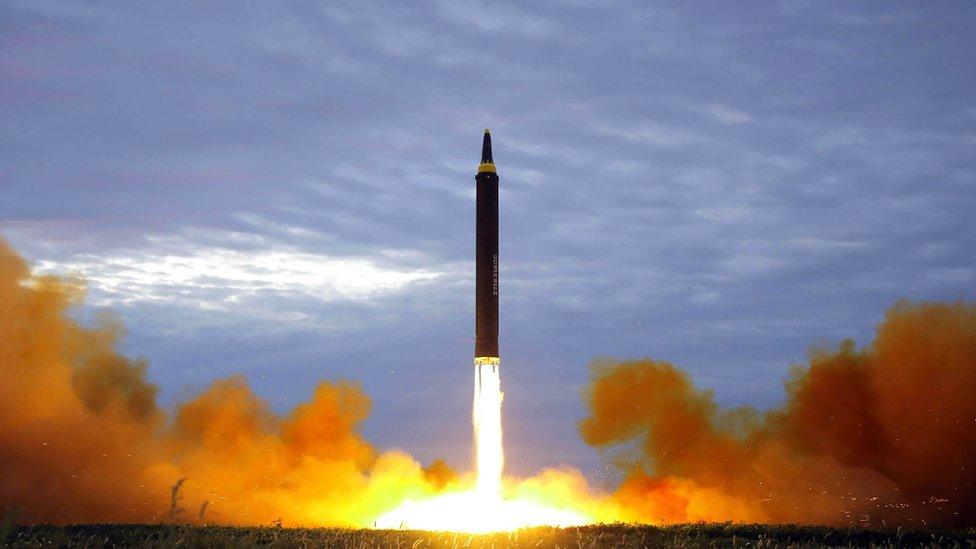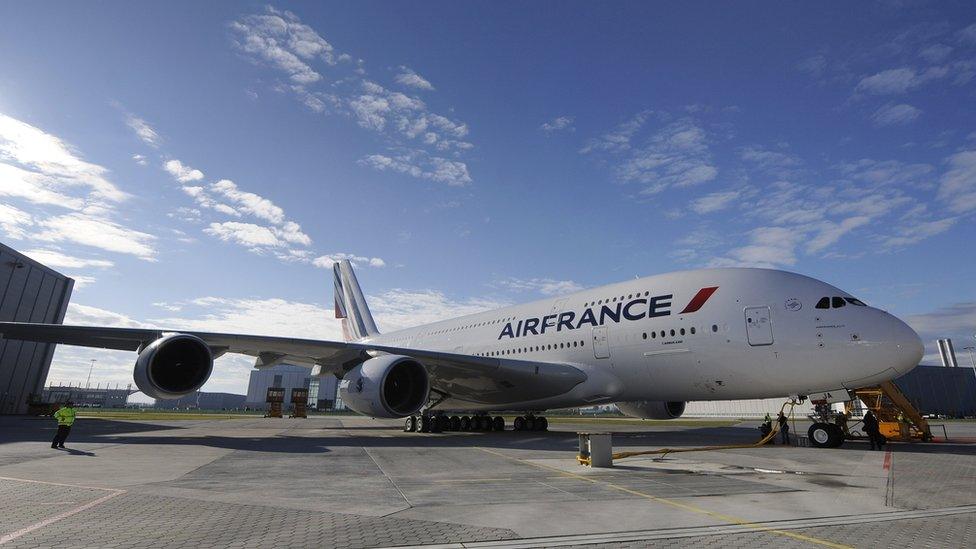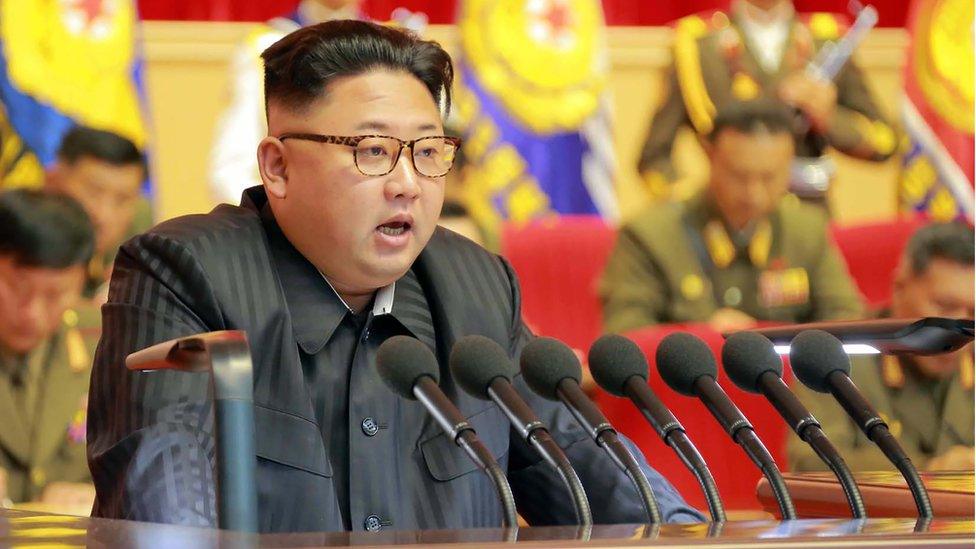Are North Korean missile tests a risk to commercial planes?
- Published

When North Korea sends missiles across Japan into the Pacific, they fly though international airspace - above and past civilian aircraft.
As Japan sounds alarms warning citizens to seek shelter, what is the risk that one of Pyongyang's missiles hits a plane packed with ordinary travellers?
It is a question that people are asking since both of Pyongyang's most recent launches took place without any warning.
One passenger landing at Osaka on Friday had this to say after the plane touched down.
Allow X content?
This article contains content provided by X. We ask for your permission before anything is loaded, as they may be using cookies and other technologies. You may want to read X’s cookie policy, external and privacy policy, external before accepting. To view this content choose ‘accept and continue’.
The probability of an incident is very low, but experts agree that the risk does exist.
"If a passenger plane would be hit, the pressure for a military response by the US and its allies would grow very, very high," warns Vipin Narang, associate professor and South Asian security expert at MIT.
He is quick to add that the scenario is very unlikely, but it nonetheless remains a chance and could be a "pathway to war".
How things could go wrong
"These missile tests do pose a risk for commercial planes," agrees Ankit Panda, associate editor of The Diplomat.
North Korea does not announce its missile tests which means they come without warning or known flight path. Usually, countries put out notices well ahead of any such tests to let airlines and ships know to avoid certain areas.
"Determining the actual risk of an incident is difficult though," Mr Panda explains. "It's a very low chance. Ultimately you're talking about to two fairly small objects coming into contact in three dimensional space."

Showing off missiles are a regular feature of Pyongyang's parades
North Korea, like other countries, has access to international civil aviation data so scientists can study the airspace they are about to send their missile into and determine which area is the least populated.
"Pyongyang certainly wants to minimise the risk of any incident," Mr Panda explains. "Contrary to what people might think, they don't want an incident. They would look to a trajectory that minimises risk."
But a risk remains and could be amplified by two factors:
the missile veers off course and enters busier airspace
the missile breaks up in flight and creates a debris field
Pyongyang calibrates its tests so that they overfly the thinnest part of Japan along a route where they anticipate minimal air traffic, Mr Narang says. This calibration is based on the assumption the test will be successful.
"The latest missile sent on Friday is thought to have been a Hwasong 12 - which before the last few tests did not have a particularly high success rate," he warns.
"So it's entirely plausible the missile would go awry and it enters a much more congested airspace."
The second factor is the missile could disintegrate and break up somewhere mid-flight. "This would create a debris field that could be a risk to aircrafts at high altitude," Mr Panda explains.
Again, the high failure rate in the past of North Korean missile tests could increase the odds of that scenario.
Airlines taking precautions
While the risk of an incident remains very low, it is something that airlines are already taking into consideration.
"Some airlines have indicated that they are changing their flight paths to avoid flying over North Korea and the area between North Korea and Hokkaido," explains Ellis Taylor of aviation analysts FlightGlobal.
In early August, Air France expanded their no-fly zone around North Korea, he says.

Air France has changed its flight routes to Japan
"The decision came after one of their aircraft had come within 100km (62 miles) of one of North Korea's previous missile tests. On their flights to Tokyo and Osaka it's now taking between 10 to 30 minutes longer because they are trying to go around that area."
Finally, there is one other risk that airlines are looking at, beyond an immediate impact or debris.
Events like the shooting down of MH17 over Ukraine mean that airlines are very aware of the risks of one their planes getting misidentified as military in or near contested airspace.
That means that if tensions around the Korean peninsula continue to heat up, airlines might decide to choose routes that avoid the region.
- Published15 September 2017

- Published14 September 2017

- Published21 April 2020
